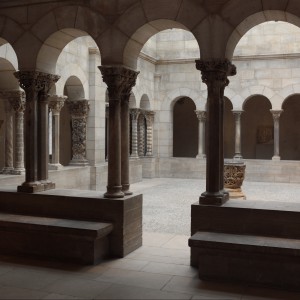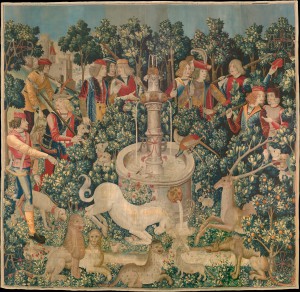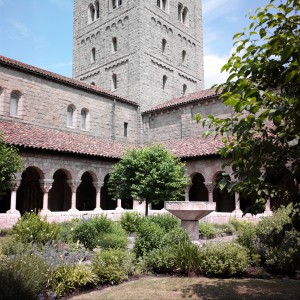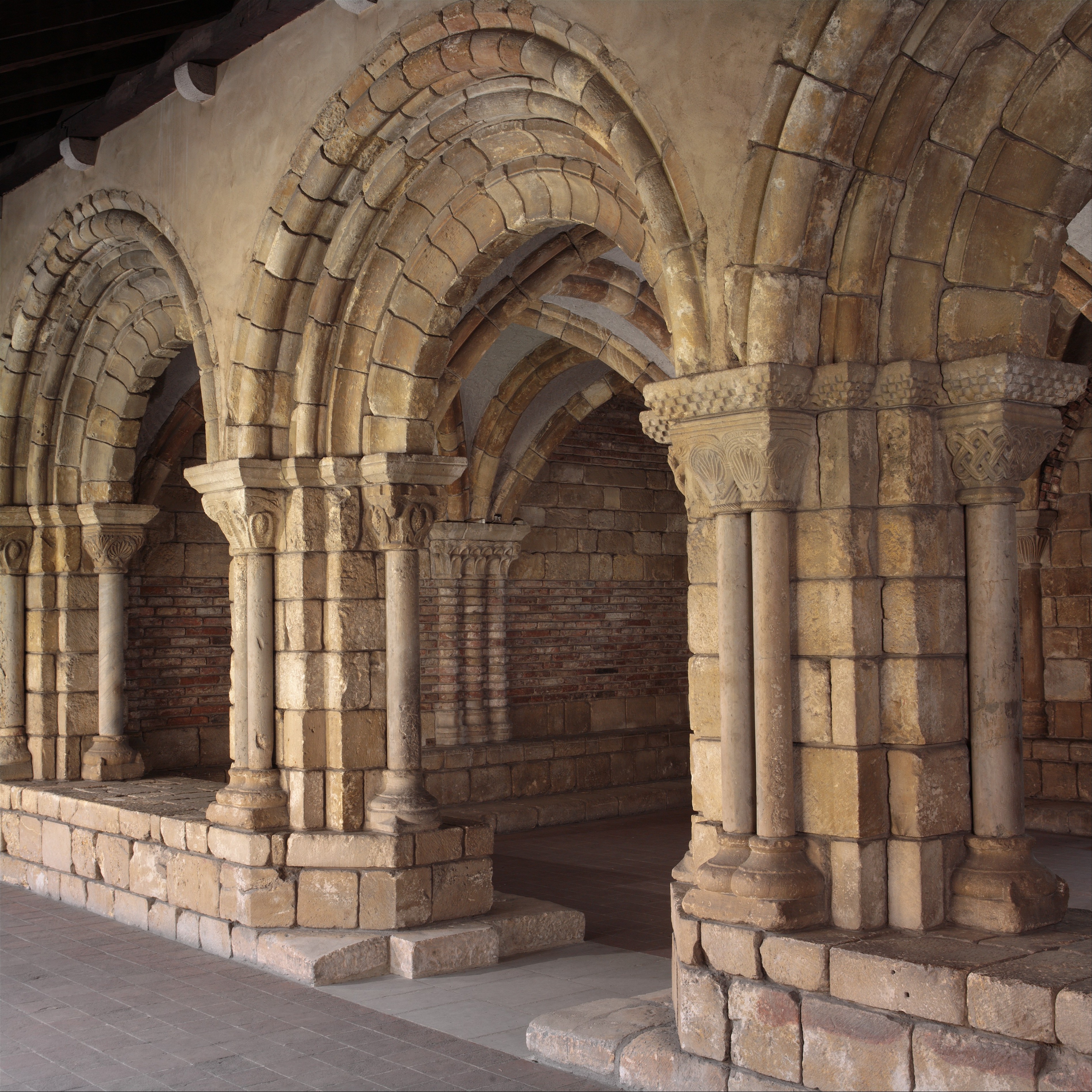By Samantha Dossena
 Now celebrating its 75th anniversary, The Cloisters museum is truly a hidden gem amongst the hustle and bustle of New York City. There is a quality about this branch of the Metropolitan Museum of Art that makes you feel like you are hiding a secret just by being there. The stones that make up the structure are grey and cold, but they hold a warmth that invites you into their history. The Cloisters museum is structurally made from imported ruins of various medieval structures in Europe, including parts of four medieval cloisters. The majority of the imported structural elements are from the cloister of Saint-Guilheim-le-Désert, a French monastery founded in 804. The American sculptor George Grey Barnard
Now celebrating its 75th anniversary, The Cloisters museum is truly a hidden gem amongst the hustle and bustle of New York City. There is a quality about this branch of the Metropolitan Museum of Art that makes you feel like you are hiding a secret just by being there. The stones that make up the structure are grey and cold, but they hold a warmth that invites you into their history. The Cloisters museum is structurally made from imported ruins of various medieval structures in Europe, including parts of four medieval cloisters. The majority of the imported structural elements are from the cloister of Saint-Guilheim-le-Désert, a French monastery founded in 804. The American sculptor George Grey Barnard purchased these elements and brought them to New York to create The Cloisters brick-by-brick right before World War 1. He later sold The Cloisters to John D. Rockefeller, Jr. in 1925. Rockefeller then gave The Cloisters to the city of New York so that they could be a part of The Metropolitan Museum of Art. Thanks to Rockefeller’s generosity, The Cloisters is the only American museum exclusively dedicated to art of the Middle Ages. The actual term cloister comes from the Latin word claustrum, which means “enclosure”. Cloisters were rectangular court-like structures that were created as physical additions to a church so that monks could have a private space away from laypeople. They were based off the Roman court concept which could be found in Roman homes, bathhouses, and public areas. This museum has three beautiful cloistered gardens which transport you into a world into its own. One of these gardens, the Bonnefont Cloister Herb Garden, has over 250 plant species which were used in the Middle Ages for medicinal and household purposes. The plants are labeled according to their use, an entertaining feature that shows the potential applications of some plants that are now commonly overlooked.
purchased these elements and brought them to New York to create The Cloisters brick-by-brick right before World War 1. He later sold The Cloisters to John D. Rockefeller, Jr. in 1925. Rockefeller then gave The Cloisters to the city of New York so that they could be a part of The Metropolitan Museum of Art. Thanks to Rockefeller’s generosity, The Cloisters is the only American museum exclusively dedicated to art of the Middle Ages. The actual term cloister comes from the Latin word claustrum, which means “enclosure”. Cloisters were rectangular court-like structures that were created as physical additions to a church so that monks could have a private space away from laypeople. They were based off the Roman court concept which could be found in Roman homes, bathhouses, and public areas. This museum has three beautiful cloistered gardens which transport you into a world into its own. One of these gardens, the Bonnefont Cloister Herb Garden, has over 250 plant species which were used in the Middle Ages for medicinal and household purposes. The plants are labeled according to their use, an entertaining feature that shows the potential applications of some plants that are now commonly overlooked.
 The Cloisters museum is most famous for their unicorn tapestries, a series of seven tapestries made in France in the 1500s. These gorgeous tapestries were created with such great detail, that you can easily get hooked into looking at them for hours, neglecting the rest of the artwork on display at the museum. The tapestries display a story of a unicorn as he is hunted by noblemen and their trained dogs. In the first set of tapestries, the unicorn is seen approaching a stream so that it can dip its horn in the water and rid it of the poison a snake left there the night before. The unicorn’s “blessing” of the water was believed to be the only reason that any person or animal could drink the poisoned water and survive. This act of blessing the water and his eventual death are two of the reasons that some people believe that the unicorn symbolizes Jesus Christ. Different species of animals are seen gathering around the stream to drink, not concerned at all that their natural predator is right beside them. As the unicorn is dipping his horn
The Cloisters museum is most famous for their unicorn tapestries, a series of seven tapestries made in France in the 1500s. These gorgeous tapestries were created with such great detail, that you can easily get hooked into looking at them for hours, neglecting the rest of the artwork on display at the museum. The tapestries display a story of a unicorn as he is hunted by noblemen and their trained dogs. In the first set of tapestries, the unicorn is seen approaching a stream so that it can dip its horn in the water and rid it of the poison a snake left there the night before. The unicorn’s “blessing” of the water was believed to be the only reason that any person or animal could drink the poisoned water and survive. This act of blessing the water and his eventual death are two of the reasons that some people believe that the unicorn symbolizes Jesus Christ. Different species of animals are seen gathering around the stream to drink, not concerned at all that their natural predator is right beside them. As the unicorn is dipping his horn in the stream, the hunters and their dogs begin their chase. One of the hunters wounds the unicorn with a spear, and we can see the blood running down the unicorns flank. It is amazing how realistically the blood is depicted, especially since it made from wool and silk woven on a loom rather than by a paintbrush on canvas. We see the unicorn fighting his way from the hunters, wounding one of the hunting dogs in the process. I highly recommend going to visit the Cloisters, not just because it is their 75th anniversary, but to see these beautiful tapestries in person at least once in your life.
in the stream, the hunters and their dogs begin their chase. One of the hunters wounds the unicorn with a spear, and we can see the blood running down the unicorns flank. It is amazing how realistically the blood is depicted, especially since it made from wool and silk woven on a loom rather than by a paintbrush on canvas. We see the unicorn fighting his way from the hunters, wounding one of the hunting dogs in the process. I highly recommend going to visit the Cloisters, not just because it is their 75th anniversary, but to see these beautiful tapestries in person at least once in your life.
(The collection of items at the Cloisters also includes an early fifteenth-century private devotional book called The Belles Heures)







